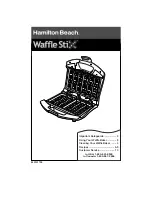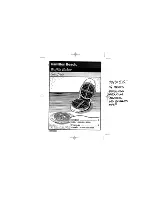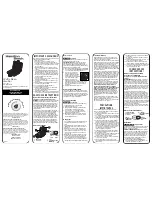
9
8
The Vital Ingredients:
To ensure you have the best results, it is important to use fresh
and quality ingredients. All of them should be at room
temperature and need to be weighed precisely with the
measuring cup and the measuring spoon.
FLOUR:
Bread flour should be used in the machine. Bakers flour or Plain
flour may also be used. Plain flour is widely available, however
we recommend flour that contains 11-12% protein to
obtain the best results. Do not use Self-raising flour
unless specified in the recipe. Keep flour in a
hermetically sealed container to preserve its
quality.
YEAST:
Yeast is what makes the dough
rise. The quality of yeast can vary, and it
does not always rise in the same way.
Dried yeast has been used to bake the
recipes in this booklet.
If you use fresh yeast, multiply the quantity by 3
(in weight) and dilute the yeast in a small amount of warm
water with a little sugar for better results.
Before using dried yeast, always remember to check the use by
date as stale yeast will not deliver good results and the bread
might not rise.
In New Zealand, we recommend using Edmonds Active Yeast,
which is the most readily available yeast product. If you are
using Edmonds Surebake Yeast, please ensure you double the
quantities of yeast specified in the recipe.
MILK:
Milk enhances the flavour and the nutritional value of
the bread.
The recipes in this booklet use either fresh milk or milk
powder. Fresh milk should not be substituted for milk
powder unless otherwise stated in the recipe. Low fat,
skim milks and milk powders can be used with good
results.
EXTRAS:
Additional ingredients can be added during the
baking process: olives, bacon pieces, nuts,
raisins… Wait for the beep alert before you
insert additional ingredients. Add small
quantities at a time and take care to cut all
ingredients into small pieces.
WATER:
Water rehydrates and activates the yeast. Tap water
has been used in all the recipes in this booklet.
Always use water at room temperature. Boiling or
hot water will accelerate the chemical process of the
yeast whilst water that is too cold will slow it down.
Water can be totally or partially replaced by milk or
others liquids.
EGGS:
Eggs make the dough richer, improve the colour of the
bread and will create a soft, white centre.
Recipes are designed for 50g size eggs, so if your eggs
are bigger, add a little flour. If they are smaller, use less
flour.
SUGAR:
Sugar provides sweetness and flavour.
Both brown sugar & white sugar can be
used.
FATS AND OILS:
Fats make the bread softer and tastier. If you use butter, cut
it into tiny pieces or soften it. You can substitute 15g butter
for one tablespoon of oil. Do not add hot butter. Margarine
can also be used. Be mindful to keep the fat from coming
into contact with the yeast.
2
Содержание Homebread OW3001
Страница 1: ...Recipe book...
Страница 20: ...3 8 notes...






































